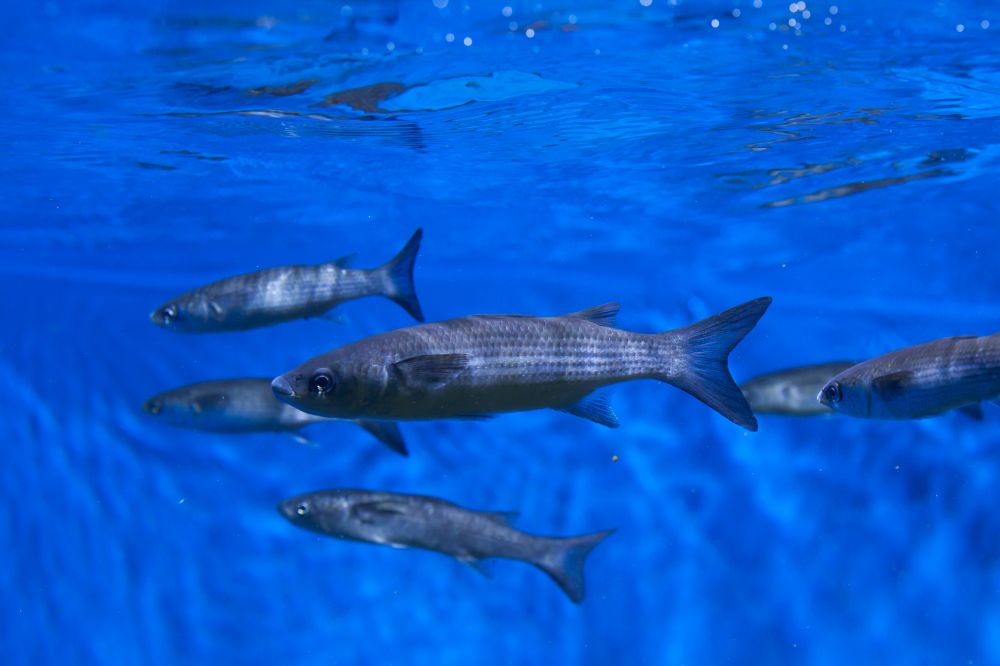
Read the article with FishingTheSpot: the mullet fish
Keep an eye on this subject!
Thousands of species spotlights and techniques but also all the local information about your city!



Meet other anglers near you and share your fishing fishing trips, afoot or on a boat, at sea or in freshwater
See the fishing tripsThe Mullet fish

April to August
20 cm
Did you fish
this species this month?
The Mullet fish belongs to the Mugilidae family. It can measure up to 75 cm and weigh 2.5 kg. A 16-year-old individual holds the observed longevity record. Breeding generally takes place from July to October. The female can lay up to 2.6 million eggs. It is fished from April to August.
The mullet has an elongated body of about 35-50 cm or even 70 cm, with an oval cross-section and a robust appearance. Its color is generally silvery grey, bluish (sometimes more or less white, olive or brown), lightening on the sides and light belly. Sometimes grey longitudinal lines and golden reflections are present on the dorsal part. The lateral line is rarely visible. A small black spot is often present in the armpits of the pectoral muscles. The flattened head is wide, fat eyelids are well developed (but not always visible underwater because of their transparency) and protect the eyes near the snout. Its mouth has straight, dense and thin teeth, usually in several rows. The commissure ends below the posterior level of the nostril. Its upper lip is thin and smooth. It has two dorsal fins: the first with four spines and the second with 8-9 soft rays. The yellowish anal fin has 8 soft rays and 3 spines; pectoral fins have 16-19 rays; the pectoral axillary scale is well developed and about one-third the length of the fin. The ventral, anal and lower lobe of the caudal fins are sometimes yellow (but not necessarily yellow). The scales, arranged in lateral series (36-45), are cycloid (smooth
The Mullet fish lifestyle
They are day-fed fish. Juveniles feed on zooplankton (micro-crustaceans, copepods, mosquito larvae, and plant debris for larvae arriving in fresh water). Then larger individuals will consume microalgae, organic detritus and small invertebrates found on the bottom or on algae and meadows. Groups of fish are often observed taking bites of sediment on the bottom, seeming to graze the sand.
The mullet fish that reach sexual maturity around 3-4 years of age gather far from the coast in large schools to spawn. Females can lay 0.5 to 2.6 million light yellow and slightly floating (0.72 mm) eggs. Larvae (2.4 mm) hatch 48 hours after fertilization and drift in plankton towards coasts and estuaries.
The Mullet fish habitat
Catadromous, the mullet lives in fresh water (estuaries and rivers) after being born at sea (salinity from 0 to 790 0/00). But it can also live near the coast, in mangroves and lagoons between 0 and 120 m, in water between 8°C and 24°C.
In the Mediterranean, the mullet enters ponds and coastal lagoons in late autumn and returns to spawn at sea in early summer. It has a very wide distribution! Living close to the coasts of all tropical, subtropical and temperate seas, the species can be found: In the Eastern Pacific (from California to Chile) and the Western Pacific (from Japan to Australia, including Polynesia and New Caledonia. Observed in the Okhotsk Sea). It also lives in the Indian Ocean (from India to South Africa, via Mayotte and Reunion Island). The species can be found in the Western Atlantic (from Canada to Brazil - although the question of its presence arises for the Bahamas and the Caribbean - it is listed in Guyana) and in the Eastern Atlantic (from the Bay of Biscay to South Africa). The mullet is also present in the Mediterranean and the Black Sea.
The Mullet fish angling
There are several different techniques for fishing mules such as the floating line (shot, bolo) or surfcasting.


